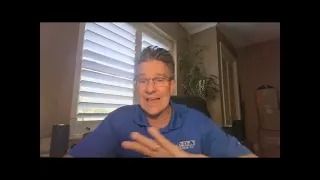Call (727) 784-5555
Tapping into home equity, particularly for people in or near retirement, can be challenging — especially for those who may have a pressing need.
Traditional equity-tapping methods — such as selling the home or taking out a home equity loan — could present lifestyle challenges, which is where alternative options like reverse mortgages can come into play. But these products also come with their own challenges, according to a column published recently by The New York Times.
Older homeowners may contemplate the traditional methods, but depending on the person, they may be out of the question, according to financial columnist Ron Lieber.
“Your home may be just the way you like it, because you built it that way or spent decades fixing it up,” the column explained. “If you’re attached to local doctors or a house of worship, it is difficult to cut ties and move away. Clearing out years of belongings is a total pain. And an appropriate and affordable new place — no steps, minimal maintenance — may simply not exist wherever you want to be.”
Interest rates also further complicate matters if the homeowner has a more beneficial mortgage rate than is available today. And many seniors who hope to leave their home to an heir may find other challenges tied to the idea of selling.
“That brings us to reverse mortgages,” Lieber wrote. “With this product, eligible people 62 and older can extract equity in a variety of ways, say through a lump sum. Interest accrues in the background, and the balance of the reverse mortgage goes up instead of down, the way a normal mortgage would. You generally pay off the mortgage when the home is no longer your principal residence.”
But most people “reject reverse mortgages,” according to the column.
“Lenders have rarely underwritten more than 100,000 federally insured ones in any fiscal year, and that hasn’t happened since 2009,” Lieber wrote. “Many older people remember scandals involving the products, when borrowers felt misled and surviving spouses or heirs could not keep the homes. New federal protections helped clean things up.”
Considering the demographic realities, however, it may not be possible to avoid products like them.
“[R]everse mortgages or something like them seem inevitable in a nation where individuals are entirely responsible for their own retirement savings,” the column explained. “One good test for their utility is this: Do any financial advisers who pledge to act only in the best interest of their clients help members of their own family borrow in this way?”
One financial planner — Jeremy Eppley of Owings Mills, Maryland — shared the story about why he recommended the product to a client. His aunt owns her home free and clear, but inflation has encroached on her fixed income in retirement. A reverse mortgage helped improve the quality of her life, Eppley told the Times.
“I’d never heard of her going on vacation,” he said. “She could live a little.”
Other companies are engineering alternatives for tapping home equity, like shared equity investment products or sale leasebacks. But the core issue of the way that retirement financing is structured in the U.S. may necessitate a broader adoption of home equity-tapping tools, the column said.
“With home equity, we may have tipped too far into seeing homes as totems of a financial life well and conservatively lived,” Lieber wrote. “Homes are trophies, sure. But their equity is also a tool. Absent any radically improved government safety net, people without much savings are going to need more ways to extract it.”
Have A Question?
Use the form below and we will give your our expert answers!
Reverse Mortgage Ask A Question
We will get back to you as soon as possible.
Please try again later.
Start Your Loan
with DDA todayYour local Mortgage Broker
Mortgage Broker Largo See our Reviews
Looking for more details? Listen to our extended podcast!
Check out our other helpful videos to learn more about credit and residential mortgages.





